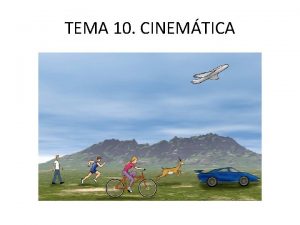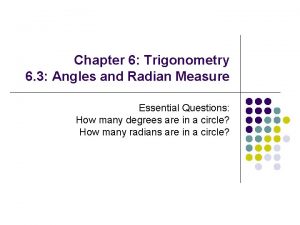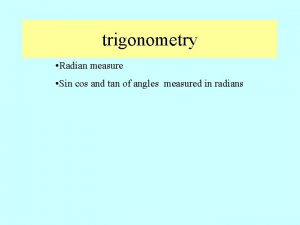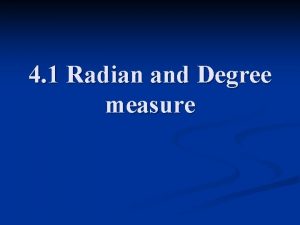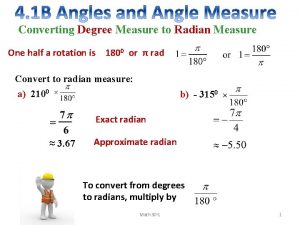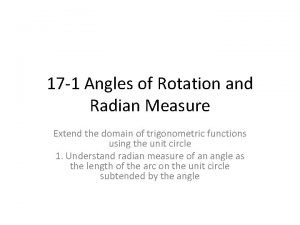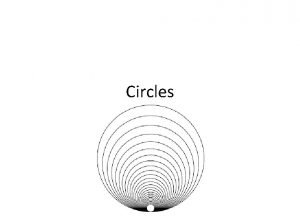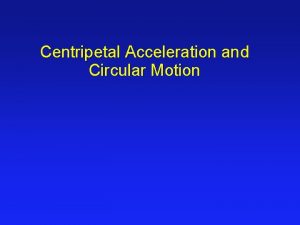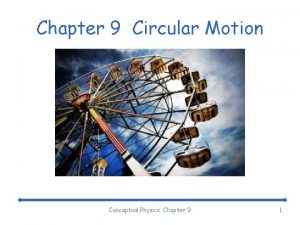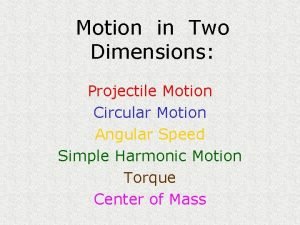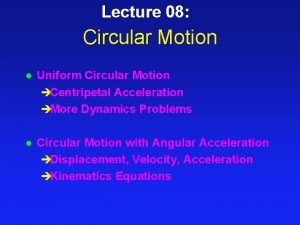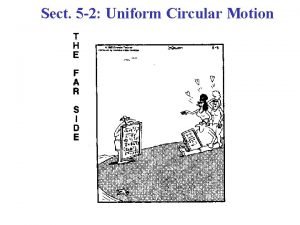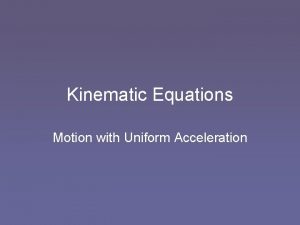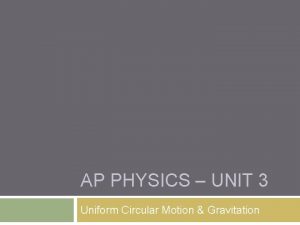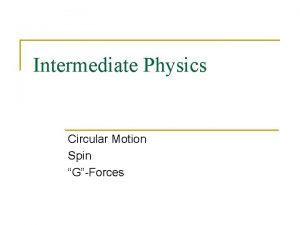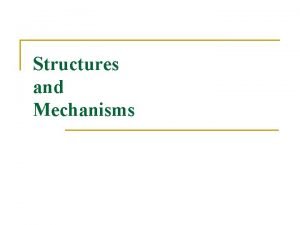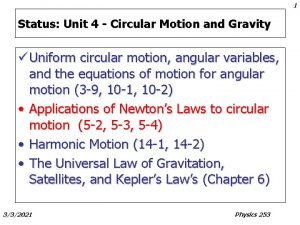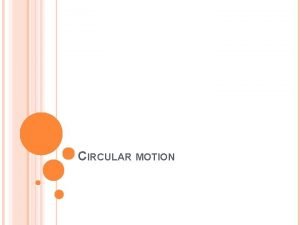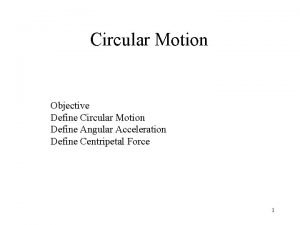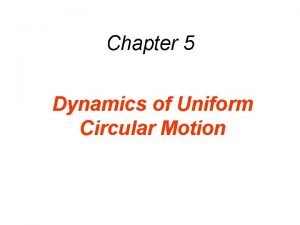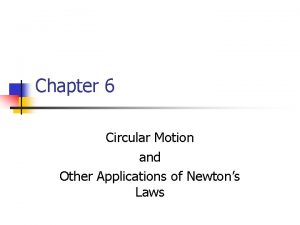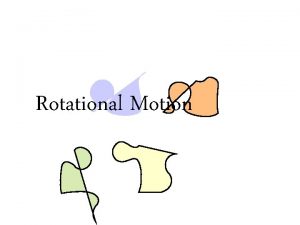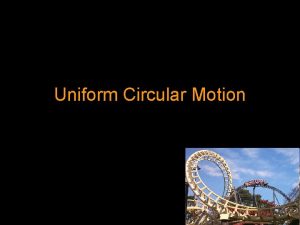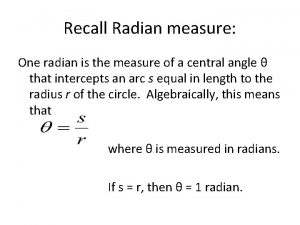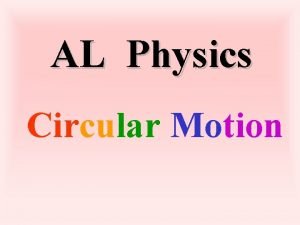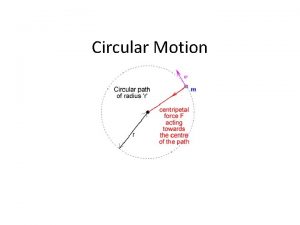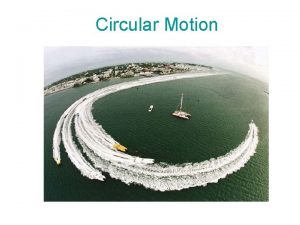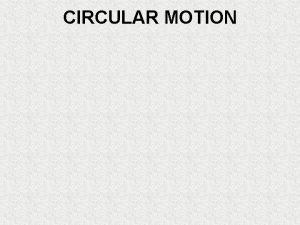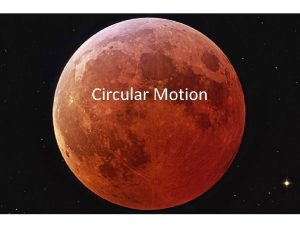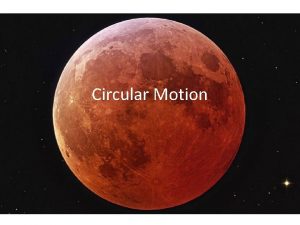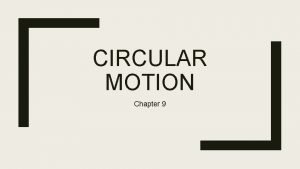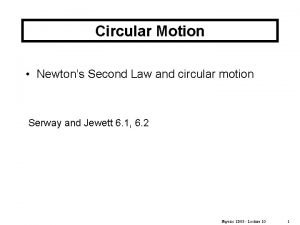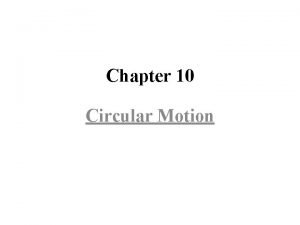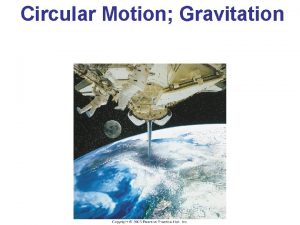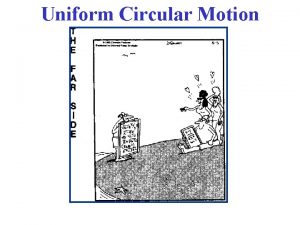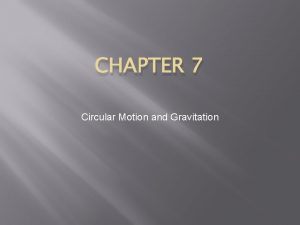Circular Motion Radian Measure A Radian is the


























- Slides: 26

Circular Motion Radian Measure A Radian is the size of the angle of a sector when the arc length is equal to the radius. arc length = radius 1 radian 360 degrees = 2π radians 180 degrees = π radians

Radian Conversions To convert between revolutions and radians we use the knowledge that 1 rev = 2π radians. 1) Convert 6000 revs/min into rad/s 6000 rpm = 6000 x 2π rad/min = 200π rad/s 2) Convert 20 rad/s into revs/min 20 rad/s Page 221 Exercise 12 A Q 1 - 5

Angular velocity usually denoted by ω (greek letter omega) and is measured in rad/s. Angular velocity in terms of angle Ɵ Angular velocity in terms of linear velocity Acceleration in terms of linear velocity

Angular velocity in terms of linear velocity Q B v ω P A A particle is travelling from A to B on the circumference of a circle with radius r and linear speed v ms-1. If the time taken to travel from A to B is 1 second then Arc AB = v x 1 = v metres If the angular velocity is ω rad/s then

Acceleration in terms of linear velocity In vector form r = xi + yj (away from centre) x = r cos θ x = r cos ωt i y = r sin θ y = r sin ωt j i j vx = -r ω sin ωt i vy = r ω cos ωt j j i ax = -r ω2 cos ωt i ay = -r ω2 sin ωt j ax = -ω2 x i ay = -ω2 y j a = ax + ay = (-ω2 x) i + (-ω2 y) j a = -ω2 (x i + y j ) a = -ω2 r F = -mω2 r

Page 221 Exercise 12 A Q 6 – 11 Page 226 Exercise 12 B Q 1, 2, 6, 10

Centripetal Force is the force towards the centre. Centrifugal Force is the force away from the centre. Example 1. A 500 g mass on a 60 cm string is rotated in a horizontal circle by a machine. The string has a breaking strain of 200 N. What is the maximum rpm that the machine can do without the string breaking? Fc R Fc = mω2 r = R 0. 5 kg ω = 25. 8 rad/s ω = 247 rpm

Example 2. A small 50 g mass lies on a horizontal rotating disc, 8 cm from the centre. The coefficient of friction between the disc and the mass is 0. 2 The speed of rotation slowly increases. At what angular velocity does the mass start to slide? Fr = μR Fc = mω2 r In equilibrium Fc = Fr mω2 r = μR R Fc Fr 0. 05 kg mg

Example 3. In a fairground "wall of death" innocent victims are spun in giant "washing machine" with vertical axis of rotation. If the friction coefficient between clothes and wall is 0. 3, the radius of the machine is 3 metres, find the minimum angular velocity when they will seem to stick to the wall. Fr = μR Fc = mω2 r = R Fr = μmω2 r = mg Fr Fc R mg ω = 3. 3 rad/s

Example 4. A plane of mass 5000 kg has wings which provide enough lift to support its weight when flying at 200 ms-1. The plane then turns by banking at an angle of 300 to horizontal, and using the rudder on the tailfin. (a) What is the lift force from the wings? (b) What is the radius of the plane's turn? (c) What else happens to the plane when the wings are banked? L (a) L = mg L = 5000 x 9. 8 L = 49000 N mg = x. L L (b) 30 o Fc Fc 30 o mg r = 8163 m

L 30 o (c) Fc Fc 30 o mg The vertical lift will alter: y. L = Lcos 30 o y. L = 49000 x cos 30 o y. L = 42435 N As the vertical lift is now less than 49000 N the plane will descend.

Conical Pendulums Similar to back and forth pendulum, but goes round in a circle, string at angle to the vertical. We can derive an equation for the angle in terms of g, ω and the length of string

Fc = mω2 r = TsinΘ TcosΘ T mg = TcosΘ TsinΘ Fc = tanΘ mg If the length of the string is L Θ L r r = LsinΘ

A string, length 60 cm, has one end attached to a fixed point and it rotates at an angle of 300 to the vertical. The other end is attached to a 50 g mass. What is the tension in the string and the angular velocity? mg = TcosΘ 300 m 0. 6 0. 05 g T = 0. 57 N

Circular Motion on Banked Curves x. R = RsinΘ = Fc x. R R y. R = RcosΘ = mg y. R = tanΘ Fc mg

Fr = μR x + x. R = μRcos Θ + RsinΘ = Fc x y y. R - y = RcosΘ - μRsinΘ = mg R(cosΘ – μsinΘ) = mg Fr Divide equations

A car is going round a bend with a radius of 70 m with a banked angle of 20 o. There is a friction coefficient of 0. 3. Find the highest and lowest speeds that will prevent the car slipping. Horizontally RsinΘ R Rsin 20 = Fc - 0. 3 Rcos 20 RcosΘ Vertically Rcos 20 = mg + 0. 3 Rsin 20 Fc Θ mg R(cos 20 – 0. 3 sin 20) = mg

Horizontally RsinΘ R RcosΘ Vertically Rcos 20 + 0. 3 Rsin 20 = mg Fc Θ Fc = Rsin 20 - 0. 3 Rcos 20 R(cos 20 + 0. 3 sin 20) = mg mg

Vertical Circular Motion V ms-1 A particle with circular motion moving in a vertical plane will have a varying velocity due to the effects of gravity i. e. as the particle increases in height it’s velocity will decrease. To consider questions of this nature one method is to look at the Potential and Kenetic Energies at the different points of the circle. Potential Energy is found by using PE = mgh The sum of PE and KE is the same at all points

Vertical Circular Motion – Finding the Velocity A particle of mass 12 kg is suspended from a fixed point by a light string of 3 m. The initial horizontal speed is 8 ms-1. What is the speed of P when the centre angle is 40 o? A 12 kg At Point A B vm 3 m 40 o s -1 O 8 ms-1 At Point B O x 40 o h A KE = 384 J PE = 0 J KE = 6 v 2 PE = mgh PE = 12 x g x 0. 702 PE = 82. 54 J 3 m B x = cos 40 x 3 x = 2. 298… h = 3 - 2. 298… h = 0. 702 m 6 v 2 + 82. 54 = 384 6 v 2 = 301. 46 v 2 = 50. 24 v = 7. 09 ms-1

Vertical Circular Motion – Finding the Tension T B 7. A s -1 3 m 40 o 09 m O A particle of mass 12 kg is suspended from a fixed point by a light string of 3 m. The initial horizontal speed is 8 ms-1. What is the tension at point B? 12 kg 8 ms-1 Applying F = ma O T T – mgcos 40 = Fc B mg 40 o mgcos 40 T = 291. 06 N

Vertical Circular Motion – Finding the Angle O 4 m Θ A 9 kg At Point A B 0 ms-1 A particle of mass 9 kg is suspended from a fixed point by a light string of 4 m. It is projected from point A with an initial horizontal speed of 3. 2 ms-1. The particle reaches point B and then returns to point A and oscillates. What is the size of the angle? 3. 2 ms-1 At Point B KE = 0 J as v = 0 ms-1 PE = 46. 08 J = mgh KE = 46. 08 J PE = 0 J O 4 -h Θ 4 m B h A Θ = 29. 6 o




 Formulas mcu
Formulas mcu 6-1 angles and radian measure answers
6-1 angles and radian measure answers Sin cos radian
Sin cos radian 1 radian to degrees
1 radian to degrees Radian measure
Radian measure 17.1 angles of rotation and radian measure
17.1 angles of rotation and radian measure In hair design, form is three-dimensional.
In hair design, form is three-dimensional. Chord secant
Chord secant Is measure for measure a comedy
Is measure for measure a comedy Uses of wind vane
Uses of wind vane Circular motion summary
Circular motion summary Chapter 9 circular motion answers
Chapter 9 circular motion answers Normal force at top of loop
Normal force at top of loop Circular motion summary
Circular motion summary Definition of uniform circular motion
Definition of uniform circular motion Kinematic equations for circular motion
Kinematic equations for circular motion Ap physics unit 3 circular motion and gravitation
Ap physics unit 3 circular motion and gravitation Circular motion
Circular motion Structure and mechanism
Structure and mechanism Non uniform circular motion examples
Non uniform circular motion examples Circular motion formulas
Circular motion formulas Rotating space station physics problem
Rotating space station physics problem Circular motion definition
Circular motion definition What causes circular motion
What causes circular motion Circular motion is one dimensional or two dimensional
Circular motion is one dimensional or two dimensional Angular acceleration formula in terms of radius
Angular acceleration formula in terms of radius Uniform circular motion formula
Uniform circular motion formula
